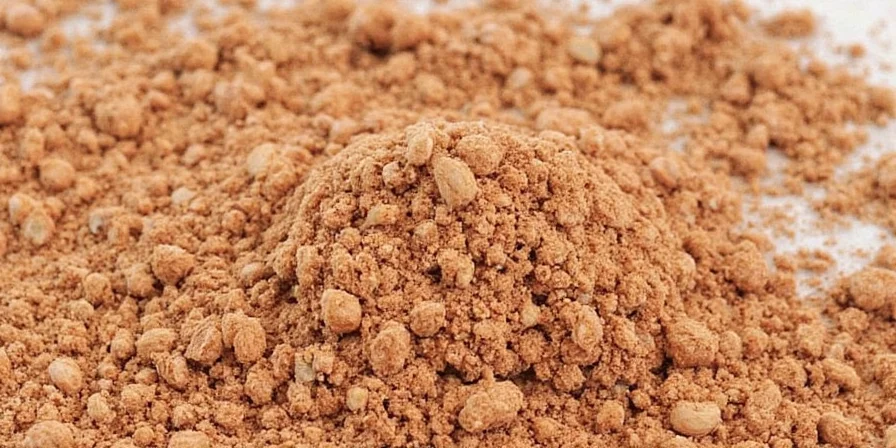Onion Powder Substitution Guide: How Much Equals One Fresh Onion?
1 teaspoon of onion powder equals 1/4 cup (4 tablespoons) of minced fresh onion. This precise conversion ratio solves the most common cooking dilemma - substituting onion powder for fresh onions in your recipes. Keep this golden rule in mind as you transform your everyday cooking with this versatile pantry staple.
| Fresh Onion Amount | Onion Powder Equivalent | Best For |
|---|---|---|
| 1/4 cup minced | 1 teaspoon | Soups, sauces, dressings |
| 1/2 cup minced | 2 teaspoons | Stews, casseroles |
| 1 cup minced | 1 tablespoon | Meatloaf, burgers |
| 1 medium onion | 1.5 tablespoons | Dry rubs, spice blends |

7 Essential Onion Powder Tips Every Home Cook Needs
Stop guessing with onion powder - these proven techniques guarantee perfect results:
- Moisture control: Store in airtight container with silica packet to prevent clumping (moisture content below 5% maintains potency)
- Flavor activation: Bloom in hot oil for 30 seconds before adding liquids to release maximum flavor compounds
- Substitution adjustment: Reduce liquid by 1-2 teaspoons per tablespoon of powder to compensate for missing onion moisture
- Texture preservation: Add during last 15 minutes of cooking to maintain distinct flavor profile
- Clump prevention: If powder hardens, break up with clean fork before measuring
- Flavor pairing: Combine with garlic powder and paprika for perfect savory base (ratio: 2:1:1)
- Emergency fix: No onion powder? Make instant substitute with 1/2 teaspoon garlic powder + 1/4 teaspoon dried parsley per teaspoon needed

Onion Powder vs Fresh Onions: When to Use Which
Choose the right form for perfect results every time:
| Situation | Best Choice | Why |
|---|---|---|
| Meatloaf or burgers | Onion powder | Even distribution without texture interference |
| French onion soup | Fresh onions | Caramelization requires fresh onion sugars |
| Dry rubs | Onion powder | Adheres better to meat surface |
| Salsas or salads | Fresh onions | Texture and bite enhance freshness |
| Slow cooker recipes | Onion powder | Maintains flavor integrity through long cooking |
How to Make Perfect Onion Powder at Home
Superior flavor in 6 simple steps (no special equipment needed):
- Choose firm, heavy yellow onions (3-4 medium)
- Slice uniformly to 1/8 inch thickness using sharp knife
- Spread in single layer on baking sheets
- Bake at 200°F (95°C) for 2-3 hours until brittle
- Cool completely before grinding in spice grinder
- Store in dark glass jar with oxygen absorber

Buying Guide: Spot Premium Onion Powder
What food manufacturers won't tell you (but you need to know):
- Color test: Should be uniform light tan - dark spots indicate scorching
- Smell test: Strong, clean onion aroma without mustiness
- Texture check: Fine, consistent powder that flows freely
- Label reading: "100% pure onion" without anti-caking agents

Creative Ways to Use Onion Powder Beyond Seasoning
Professional tricks that transform ordinary dishes:
- Add 1/2 teaspoon to scrambled eggs for instant restaurant-quality flavor
- Mix with ketchup (1:4 ratio) for perfect burger sauce
- Blend with brown sugar (2:1) for caramelized dry rubs
- Stir into mayonnaise for instant aioli (1/2 tsp per 1/4 cup)
- Sprinkle on roasted potatoes during last 10 minutes of cooking

Why Onion Powder Works Better Than Fresh Onions in Some Recipes
The flavor science behind perfect seasoning: Onion powder delivers concentrated sulfur compounds without water content that dilutes flavors. When fresh onions cook, 90% of their volume evaporates as water, leaving inconsistent seasoning. Powder provides uniform flavor distribution and prevents texture issues in sauces, dressings, and baked goods. The dehydration process actually creates new flavor compounds through controlled Maillard reactions, giving powder unique umami depth that fresh onions lack.
FAQ: Your Onion Powder Questions Answered
How much onion powder equals one medium onion?
One medium onion equals approximately 1.5 tablespoons (4.5 teaspoons) of onion powder. For precise measurement, 1 cup of chopped fresh onion equals 3 tablespoons of onion powder.
Why does my onion powder clump together?
Clumping occurs when moisture content exceeds 5%. Proper storage in airtight containers with silica packets prevents this. If clumping happens, break up gently with a fork and add a fresh desiccant packet.
Can I substitute onion powder for onion salt?
Yes, but adjust for salt content. Replace 1 teaspoon onion salt with 1 teaspoon onion powder plus 1/4 teaspoon salt. For salt-free recipes, use powder alone.
Does onion powder lose potency over time?
Yes, but slowly. Properly stored (in dark glass, cool place), it maintains 80% potency for 2 years. Test freshness by rubbing a pinch between fingers - strong aroma indicates good quality.
What's the best onion powder for French onion soup?
Yellow onion powder works best for French onion soup. Its robust flavor profile withstands long cooking times better than milder varieties. Add during last 15 minutes of preparation for optimal flavor release.
The Science Behind Perfect Onion Powder Storage
Preserve maximum flavor with these evidence-based storage methods: Light and moisture are the enemies of onion powder's volatile compounds. Store in amber glass containers away from heat sources. Ideal conditions: 60-70°F with humidity below 60%. For long-term storage (over 6 months), add an oxygen absorber packet to prevent flavor degradation. Never store above the stove or near dishwasher - temperature fluctuations destroy flavor compounds faster than expiration dates suggest.
Historical Note: How Onion Powder Became a Kitchen Essential
While ancient Egyptians cultivated onions 5,000 years ago, modern onion powder emerged during World War II when food preservation became critical for military rations. This historical context explains why it remains indispensable - it solved the fundamental problem of preserving onion flavor without spoilage. Today's home cooks benefit from this wartime innovation whenever they reach for this pantry staple.












 浙公网安备
33010002000092号
浙公网安备
33010002000092号 浙B2-20120091-4
浙B2-20120091-4